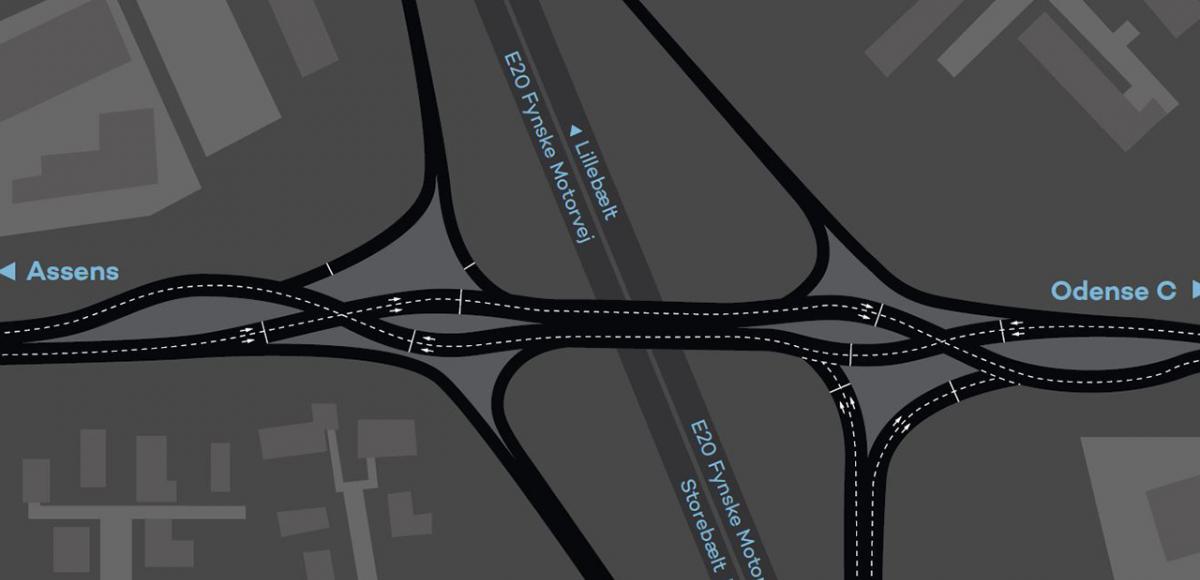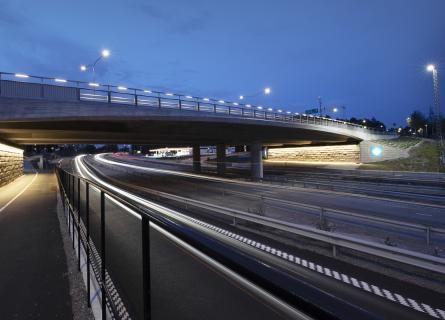
A Danish traffic gem
As metropolitan areas expand, traffic increases, resulting in long queues, congestion and traffic accidents. The solutions to these problems are often wider roads and more roundabouts, but there are other ways to improve the traffic flow.
An innovative traffic project in the Danish city of Odense has succeeded in reducing queues and accidents and at the same time, improving air quality. In September 2017, Northern Europe’s first Diverging Diamond Intersection (DDI) was implemented – this is a new type of cross intersection which is gaining ground around the world.
”Odense is Denmark’s third largest city and has a major problem with traffic congestion, particularly at a certain bridge which directs traffic onto and off the highway. There is a high risk for traffic accidents and we realised that we had to do something”, says Annette Jørgensen from Vejdirektoratet, the authority responsible for state roads in Denmark.
Optimising traffic flow leads to a better environment
To meet the increasing traffic demand of traffic pressure, there was a proposal to remove the existing bridge over the motorway and build a new one with more traffic lanes. This would make the project very expensive, resource-intensive and require the road to be closed off during construction. During a trip to the United States, some employees at Vejdirektoratet saw a new type of traffic solution – the Diverging Diamond Intersection, which improved traffic flow without expensive and time consuming reconstruction of roads. The finesse with the DDI is its smart design – it is constructed so that both traffic directions cross each other at opposite ends. Traffic that commonly drives on the right side is directed to a lane on the left which eliminates the need to stop for oncoming traffic. ÅF was commissioned to design the intersection’s traffic signal system. In order to control how many cars are entering the system and to ensure there is an even flow in both directions, the signal change is more frequent compared to a conventional intersection.
”The traffic flows better here than at a traditional intersection and this is a benefit for the environment. Because cars do not need to stop as often, there are less carbon emissions”, says Lasse Bredtved Lunde-Christensen, ÅF’s traffic engineer who is responsible for the project.
No accidents so far
Upon first glance, the diamond intersection’s design might seem illogical or even dangerous. What happens when drivers start to think about that they are driving on the ”wrong” side of the road?
”During the past months, we have made many observations and measurements of the traffic flow and so far, we haven’t had a single accident. It has been quite the opposite. These intersections are actually safer than traditional intersections because the design makes the left turn free of conflicts. So far, the response from drivers has been very positive; there are not as many queues as before”, says Annette Jørgensen.


